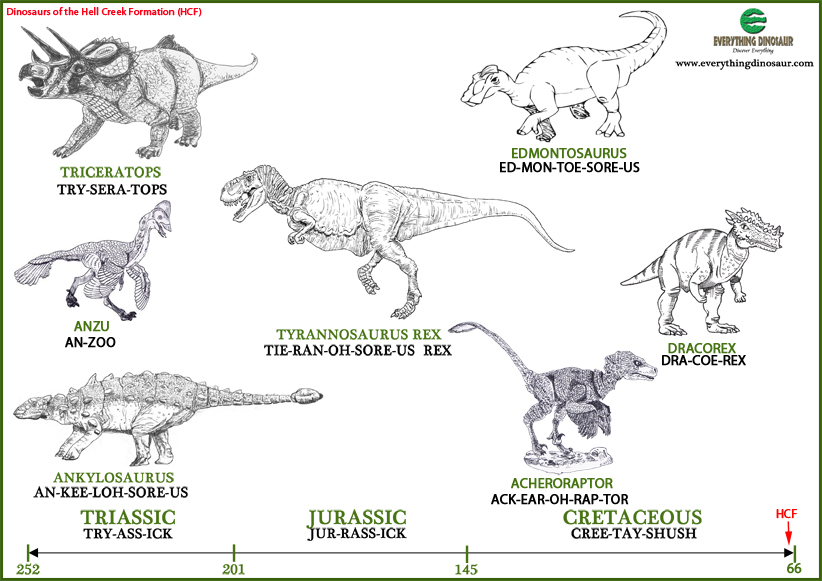The Hell Creek Formation (HCF) extends over Montana, Wyoming, North Dakota and South Dakota. It was deposited during the last 2.2 million years of the Cretaceous and is among the most fossiliferous and intensively studied Late Cretaceous terrestrial deposits in the world. The Formation comprises sediments associated with the retreat of the Western Interior Seaway leading to the development of a sizeable network of rivers covering a wide, flat floodplain, parts of which were extensively forested. It is named after substantial, comprehensively investigated exposures found along Hell Creek, near the town of Jordan, Montana.
The Hell Creek Formation
Ironically, most dinosaur fans think that the HCF must have been named a long time ago. This is not the case. It is true that the famous American fossil hunter, Barnum Brown named the Hell Creek beds (Formation) for the strata exposed in the Hell Creek Valley and other downstream tributaries of the Missouri River back in 1907. However, it was not until 2014 that the Geological Society of America formally recognised the Hell Creek Formation.
A lectostratotype (the standard, exemplar for the sediments) was identified for the Hell Creek Formation. The eighty-metre-thick exposures located at Flag Butte along the Hell Creek near the town of Jordan, Garfield County (Montana) were established as the lectostratotype in a paper published in January 2014.
The sediments were laid down at the very end of the Cretaceous and into the earliest Palaeogene. It provides evidence of an extra-terrestrial impact event preserved as a thin clay layer that contains large quantities of the rare Earth element iridium. This marks the mass extinction event denoting the demise of the non-avian dinosaurs.
The HCF preserves an extraordinary record of the ecosystems that existed both immediately prior to the end-Cretaceous extinction event and the flora and fauna present during the early Cenozoic.
Known as the “Badlands”
The area today associated with the Hell Creek Formation is referred to as the “Badlands”. This term is derived from the French phrase “les mauvaises terres” and dates back to the early years of exploration of these vast tracts of land. The term describes an area largely devoid of vegetation that is subjected to rapid erosion caused by wind, rain and running water. Parts of the HCF have peaty, coal-like deposits (lignite), representing deposition in coastal swampy environments.
The Hell Creek Formation is renowned for its remarkable fossils. Dinosaurs such as Tyrannosaurus rex, Triceratops and Edmontosaurus are known from the HCF. In addition, the deposits preserve remains of other reptiles, early mammals, fishes and Cretaceous plants.
Picture credit: Everything Dinosaur
The Hell Creek Formation remains one of the most intensively studied geological formations in the world. The Upper Cretaceous and Lower Palaeocene deposits provide a wonderful opportunity to learn more about one of the most significant times in Earth’s history.
Visit the Everything Dinosaur website: Dinosaur Toys and Models.



Leave A Comment